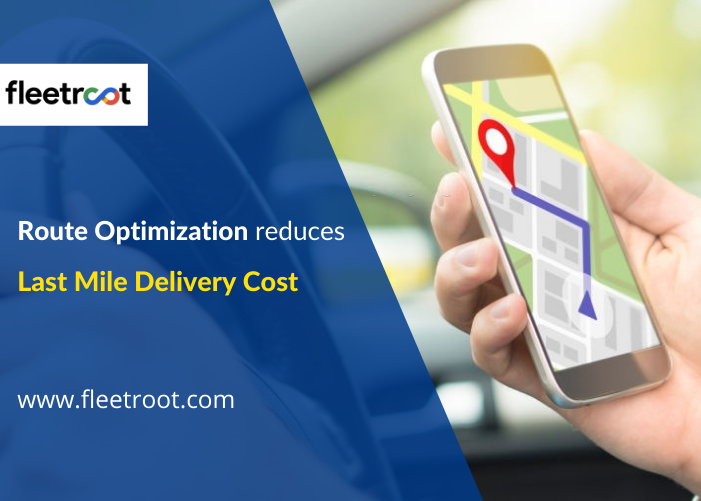Summary
While the benefits of Route Optimization are important for all types of cargo, it becomes even more critical for pharmaceutical products and nearest pharmacy stores because these are particularly sensitive (and, vulnerable) to elements like temperature, light, humidity, quality of roads (etc.).
Importantly, since pharmaceutical products are life-saving and responsible for maintaining the health of entire populations’ at large, special attention must be paid to factors affecting the efficacy of routes and transport procedures for Pharmacy Stores.
Why is Route Optimization Software important for Pharmacy Stores?
- Product type: The first step for a pharmacy is to understand the type of products that need to be transported. Naturally, not all products can be treated equally since different products need different transportation procedures.
A good benchmark to follow is the Product Stability Data which provides details about the product characteristics. This data is published by the product manufacturer and can be treated as a reliable guideline. Importantly, it outlines the period that the product can stay, or be handled, when not within the prescribed temperature without losing its effectiveness.
For example, some products will be temperature agnostic during transportation while others will need a minutely controlled temperature environment. For such products, the use of various supply chains such as a cold-chain network is a must. A cold-chain network can store and transport products between specified temperatures, typically between 2°C – 8°C (36°F – 46°F).
Another type of cold supply chain is a deep-freeze chain where products stay stable up to 40°C (104°F). This is also used for products that are kept frozen even after delivery, including seafood, produce, and ice-creams.
2. Transport distances: Naturally, the distance over which products are to be transported before reaching their final destination is always an important factor. When transporting temperature-sensitive products, this becomes even more important.
The recent pandemic threw up a sudden – and, urgent! – the need for transporting highly sensitive vaccines under extremely stringent temperature-controlled environments. These challenges were felt even more in countries with limited infrastructure where road systems, electricity connections, and supply-chain networks are disjointed and poor.
Additionally, “hot” countries where ambient temperatures typically hover around 35 – 40°C make it very difficult to transport such products. Comparatively, a country that not only is a “cold” country but also has robust infrastructure makes it much easier.
3) Supply-Chain model: Once pharmacies have identified the type of products, the next step is to choose a suitable method of distribution. This is important because there will be several variances even within the overall distribution method chosen.
Depending on product & distribution, even product packaging needs to be selected accordingly. An “active” method of packaging requires a power connection for cooling whereas a “passive” method uses containers that use cooling packs, or no cooling at all, for products that do not require any refrigeration.
- Active method: use of any technology (e.g. freezers) requires a power-connection such as electricity, battery, or even a source of solar power. All such options are popularly used to store and transport temperature-specific products inside factories, large stores, warehouses (etc.) since they ensure the required refrigeration with a stable environment. Unless there is an irregular electricity supply, troublesome temperature fluctuations are rare.
- Passive method: this method uses containers/devices that use packs of frozen water or a PCM (Phase Change Material) for cooling. A PCM uses ingredients /substances that can absorb /release a significant amount of heat and can cool independently without needing to freeze.
4. Quality of infrastructure: From an overarching perspective, the quality of Logistics and Distribution is dependent on the quality of infrastructure that exists. A robust infrastructure i.e. a total of roads, warehouses, electricity supply, vehicles, drivers (etc.) will give rise to the development – and, flourishing – of an efficient transportation system. This, in turn, will enable transport companies to deliver goods efficiently and economically.
These considerations become amplified with regards to a cold-chain network since it is not easy to operate such services when the base level of infrastructure is poor. Once you add the fragile and sensitive nature of pharmacy products to the above, you have an alarming situation.
Guidelines for transport, delivery, and storage of pharmaceutical products with regards to logistics and infrastructure are set by the World Health Organization (WHO). Expectedly, these vary significantly between developed nations and developing – or, underdeveloped – nations. It is also strongly recommended that the pharmaceutical companies themselves take an active role to help countries with poor/ minimal infrastructure by making sure that their products are delivered successfully. After all, the easy availability and affordability of pharmacy products have a direct bearing on the health and economy of a country’s population.
What is the significance of Last-Mile Delivery in Route Optimization?
As explained above, a pharma distribution network deals with products that are sensitive to temperature, humidity, time, light (etc.) and, therefore, requires a controlled and monitored environment at all times. For the most part (i.e. the “first-mile”) products have access to warehouses, containers, temperature control, regular electric supply, manpower (etc.), and although this takes up the most time in a supply-chain network, it is also where Transport Managers have maximum control.
The challenge arises once the last leg of delivery begins and containers (active, passive), frozen water-packs, PCMs (etc.) are all used based on availability, requirement, and affordability. However, given that such cargo movement is constantly exposed to several ever-changing variables including traffic, weather, road conditions (etc.), this is forever a challenge.
Lastly, Last Mile logistics is important because it deals with the end-user directly and forms an important part of generating customer satisfaction.
Conclusion: Clearly, 24 hour pharmacy stores need to pay deep attention to route optimization for successfully transporting their pharmacy products.
Using a modern, automated, and GPS-enabled last mile delivery management software is a great tool in achieving this.




